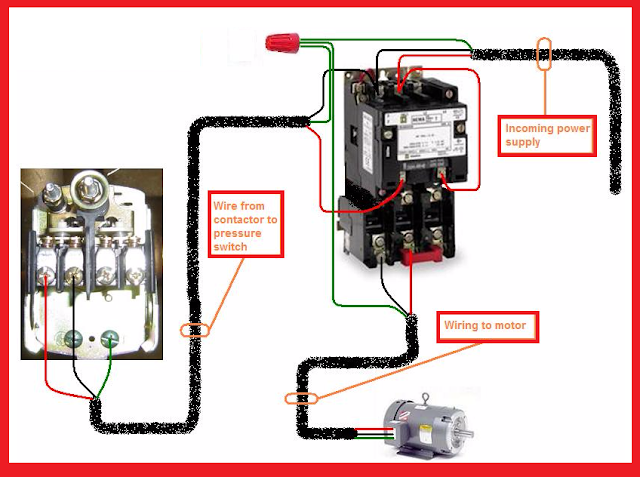AC Compressor Starter Relay: The Unsung Hero of Cool
Sweltering summer day? Cranked the AC, but nothing happens? The culprit might be a tiny, unassuming component: the AC compressor starter relay. This little electrical switch plays a massive role in keeping you cool, and understanding its function can save you from a sweaty meltdown (and a potentially hefty repair bill). Let's unravel the mystery of this often-overlooked part.
The AC compressor, the heart of your air conditioning system, is a power-hungry beast. It needs a hefty jolt of electricity to kick into gear and start pumping refrigerant. The compressor relay acts as a middleman, protecting the system from electrical overload. Think of it as a heavy-duty light switch designed to handle the high current demands of the compressor motor. Without a functioning compressor relay, your AC system is essentially paralyzed.
The compressor starter relay isn't a recent invention. Its development came alongside the rise of automotive and residential air conditioning systems in the mid-20th century. As AC systems became more complex, the need for a robust and reliable switching mechanism grew, leading to the development of the modern relay we use today. This seemingly simple device is a testament to the ingenuity of engineering, ensuring safe and efficient operation of a critical comfort system.
One of the main issues associated with AC compressor starter relays is their susceptibility to failure. Over time, the contacts within the relay can wear down or become corroded, preventing the flow of electricity. This can manifest as a complete lack of cooling, intermittent cooling, or a clicking sound coming from the relay itself. Fortunately, diagnosing and replacing a faulty relay is usually a straightforward process.
Understanding the basics of an AC compressor relay can empower you to troubleshoot basic AC issues. The relay typically consists of a coil, an armature, and a set of contacts. When voltage is applied to the coil, it creates a magnetic field that pulls the armature, closing the contacts and allowing current to flow to the compressor. When the voltage is removed, the spring returns the armature to its original position, opening the contacts and cutting off power to the compressor. Simple yet effective.
One major benefit of using a relay is safety. By isolating the high-current circuit of the compressor from the lower-current control circuit, the relay prevents potential damage to sensitive electronic components. This also protects the user from accidental electric shock.
Another benefit is increased longevity of the system components. The controlled switching action of the relay minimizes wear and tear on the compressor motor and other components, extending their lifespan.
Finally, the relay simplifies the control of the AC system. The relay allows the system to be controlled by a simple low-voltage switch, rather than requiring a high-current switch, making operation safer and more efficient. For example, the thermostat in your car or home can activate the relay, engaging the compressor without directly handling the high current required by the compressor.
If your AC isn’t working, a quick check of the AC compressor starter relay can save you time and money. Listen for clicking sounds near the relay, and inspect it for signs of damage or corrosion. If you suspect the relay is faulty, replacing it is often a simple DIY task.
Advantages and Disadvantages of AC Compressor Starter Relays
| Advantages | Disadvantages |
|---|---|
| Safety | Potential for failure |
| Increased component lifespan | Requires diagnosis to confirm issues |
| Simplified system control |
Best Practices:
1. Regularly inspect the relay for signs of damage or corrosion.
2. Use the correct relay for your specific AC system.
3. Ensure proper wiring and connections.
4. Test the relay using a multimeter to verify its functionality.
5. Consult a qualified technician for complex AC issues.
Frequently Asked Questions:
1. What is an AC compressor starter relay? - It's an electrical switch that controls the power to the AC compressor.
2. How do I know if my relay is bad? - Common signs include no cooling, intermittent cooling, or a clicking sound from the relay.
3. Can I replace the relay myself? - In many cases, yes, it's a relatively simple DIY task.
4. Where is the relay located? - It's typically located near the AC compressor or in the vehicle's fuse box.
5. What causes a relay to fail? - Wear and tear, corrosion, or electrical surges can cause relay failure.
6. How much does a new relay cost? - Relatively inexpensive, usually between $10 and $30.
7. Can a bad relay damage my AC compressor? – While unlikely, a faulty relay can potentially contribute to compressor problems if left unchecked.
8. How can I prevent relay failure? – Regular inspections and proper maintenance can help prolong the life of your relay.
Tips and Tricks:
Carry a spare relay, especially if you live in a hot climate.
Learn how to test your relay with a multimeter.
The AC compressor starter relay may be small, but its role is crucial for a functioning AC system. Understanding its function, troubleshooting common issues, and following best practices can keep you cool and comfortable, especially during those scorching summer months. From ensuring your safety to extending the life of your system components, the AC compressor relay is a true unsung hero of modern comfort. Don’t let a faulty relay ruin your cool; take the time to understand and maintain this essential component, and you’ll be rewarded with reliable, refreshing air conditioning for years to come. Neglecting this small but vital part can lead to uncomfortable temperatures and potentially costly repairs down the line. Investing a little time in understanding and maintaining your AC compressor starter relay can pay dividends in comfort and peace of mind.
Tracking the grid pinellas county power outages
Sprinter van lug nut torque your guide to wheel safety
Decoding white exploring the significance of white color codes














